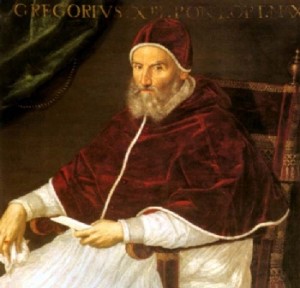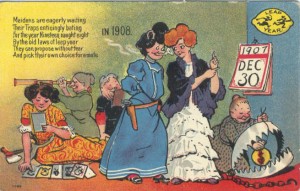Today is Leap Day. Normally, February has only 28 days, but 2012 is a leap year – instead of having 365 days this year, we have an extra (intercalary) day, called a leap day, which is inserted into the regular calendar on February 29.
Have you ever wondered why we have an extra day approximately once every four years?
 The modern solar calendar is called the Gregorian calendar, after Pope Gregory XIII, who introduced this calendar. The Gregorian calendar is actually a modification of the Julian calendar, which was named after the Roman Emperor Julius Caesar. The Julian calendar was a solar calendar that had 365 days per year and twelve months like our current calendar, with an extra day being added every fourth year. This extra day was necessary, because in reality it takes a little longer than 365 days for the earth to make one complete orbit around the sun. A solar year is actually 365 days, 5 hours, 48 minutes, and 46 seconds, or not quite 365 and 1/4 days. Julius Caesar therefore included an extra day every four years to keep the calendar on track with the sun.
The modern solar calendar is called the Gregorian calendar, after Pope Gregory XIII, who introduced this calendar. The Gregorian calendar is actually a modification of the Julian calendar, which was named after the Roman Emperor Julius Caesar. The Julian calendar was a solar calendar that had 365 days per year and twelve months like our current calendar, with an extra day being added every fourth year. This extra day was necessary, because in reality it takes a little longer than 365 days for the earth to make one complete orbit around the sun. A solar year is actually 365 days, 5 hours, 48 minutes, and 46 seconds, or not quite 365 and 1/4 days. Julius Caesar therefore included an extra day every four years to keep the calendar on track with the sun.
The problem, however, was that the solar year is slightly less than 365 and 1/4 days, so adding a leap day every four years was really an overcorrection. This error resulted in a gain of one day for every 128 years. So by the time of Pope Gregory XIII in the 16th century, the Julian calendar was 13 days out of sync with the solar year. After consulting with mathematicians and astronomers, Gregory solved the problem by reforming the Julian calendar. Instead of adding a leap day every four years, Gregory’s reform said that century years (years ending in 00) are not to be considered leap years, unless they are also divisible by 400. Thus 1700, 1800, and 1900 were NOT leap years (since they have a remainder when divided by 400), but the year 2000 WAS a leap year (it is divisible not only by 4 like a regular leap year, but it is a century year that is also divisible by 400). Gregory’s reform improved the accuracy of the Julian ca lendar, making the Gregorian calendar so accurate that it would take 3,323 years to gain one day.
lendar, making the Gregorian calendar so accurate that it would take 3,323 years to gain one day.
One tradition associated with Leap Year has to do with marriage. Normally in a relationship it is the man who may propose marriage, but in Leap Year, a woman doesn’t have to wait for a man – she may propose marriage herself.
